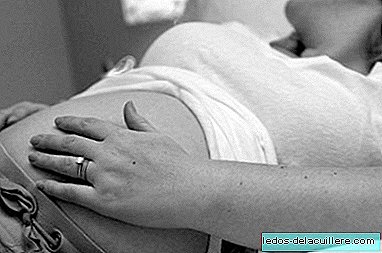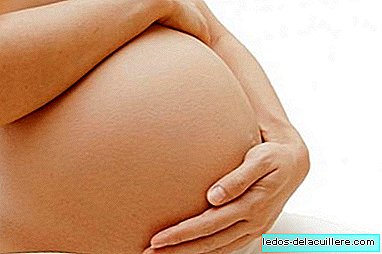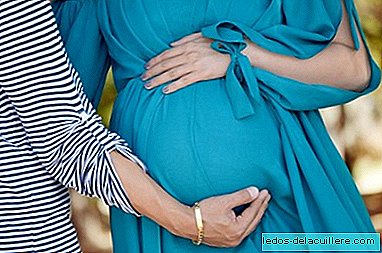
A few days ago I listened to a conversation at the door of the school (damn me for having the antenna on) in which a mother explained to another that her sister had given birth and that it cost her so much, but so much, that they had to get on the belly for the baby to come out.
Then they talked about other births of lazy babies, who don't want to go out and have to help them or who end up in caesarean section and the doorbell caused him to lose the thread of the conversation. I was surprised because I thought it was no longer done. It is known as the Kristeller maneuver, it consists of squeezing the mother's belly down, like someone trying to get cream from a pastry bag, and now I will explain what the studies say about its use: Is it useful that during delivery you are raised to the belly for the baby to leave?
The Kristeller maneuver, in question
This is a maneuver that has been questioned for many years because although its prevalence is not known (most likely it is not one of the maneuvers noted in any clinical course) for some time this part carries with it wake of bad reputation that seems to discourage its use, because it is said that could cause uterine rupture, fractures in the baby and even brain damage.
What science says about it
In the year 2009 the Cochrane wanted to make a review to know what the potential risk of Kristeller maneuver and how it affected the time of delivery. In the beginning they took three studies that analyzed these data, but errors in the methodology of two of them made that in the end they only analyzed one, in which an inflatable belt was used to make pressure on the uterus.
This study included 500 women divided into two groups, one of them used the belt and the other did not. They saw that there was no difference in the number of instrumentalized deliveries, without changes in the cord blood pH (which can determine if there has been fetal distress), there was no more income in the neonatal unit nor was there serious damage to babies or mothers. They did see that those in the belt group seemed to have the most intact perineum after delivery.
From all this the authors concluded that there is no reason to recommend the inflatable belt, since it was not clear that the benefit at the perineum level was conclusive, and they suggested that more studies should be done in this regard to know, in addition, how it can affect that the Kristeller maneuver becomes manual.
Come on, that did not clear up many doubts because what was studied is a maneuver Light, with a float-like belt that exerted pressure, probably little comparable to a woman riding you, as you can see in some births. Come on, to show a button, watch the following video, sequel to Stephen King's latest horror novel, at least:
Another study that had the same intention in which 197 cases were analyzed, but this time using the maneuver manually (I imagine less brutally than the video), concluded that there were no significant differences in the duration of births according to both ways of giving birth, that in any of the groups no baby was born with an Apgar less than 7 and that, although there were variations in the pO2 and pCO2 data of the cord blood, the data remained within the normal limits
In another study, which dates back to 2012, they wanted to see what consequences the maneuver had on women's pelvic floor health, that is, if it could somehow affect the likelihood of urinary and anal incontinence and genital prolapse.
They studied 522 women and saw that the women who had had the maneuver had received more episiotomies (probably as a pack to lighten a delivery that progresses little: we open a little more "the door" and give the baby a little push to "invite" him out), so I would not say that it is a consequence of the maneuver, they had suffered more dyspareunia (pain while having sex) and more general pain in the perineum area. In relation to bladder and anal incontinence and prolapse they did not see significant differences between the two groups of women.
Why the Kristeller maneuver should not be used in childbirth
Or why you don't have to climb anyone in the belly: first, because there is no scientific evidence to prove that it is useful for anything and because, as we just saw, hurts the perineum. So, if it does not make the thing go faster, it is not done, that in a delivery the less you intervene, if everything goes well, the better.
The second, because in order to do Kristeller's maneuver well, the woman has to lie down, and that, and only that, is a mistake. It is recommended that the woman is standing, or squatting, or in a position of hands and knees (on all fours, so that we understand each other), so that the force of gravity help for the baby to descend through the birth canal.
And the third, because you can be touched by an adventurous midwife like the one in the video, very aware of the cause and very "this is born as my name is Antonia" that, outside the studios, can do a lot of damage to the mother and / or a lot of damage to the baby.
The Ministry of Health and Social Policy, already in its "Clinical Practice Guide on the Care of Normal Birth" of the year 2010, which we talked about at the time, gives its vision on the Kristeller maneuver with a brief but concise phrase: "It is recommended not to perform the Kristeller maneuver".












